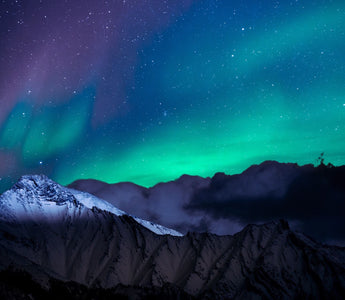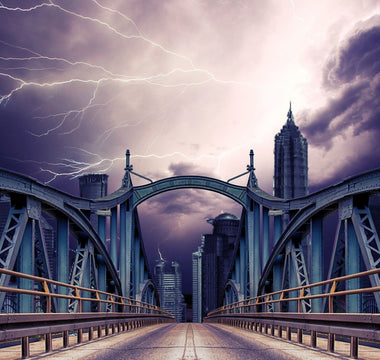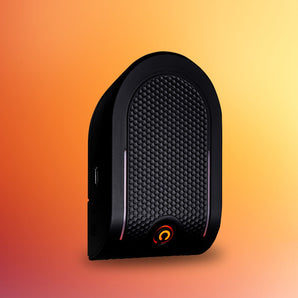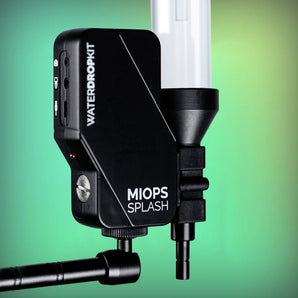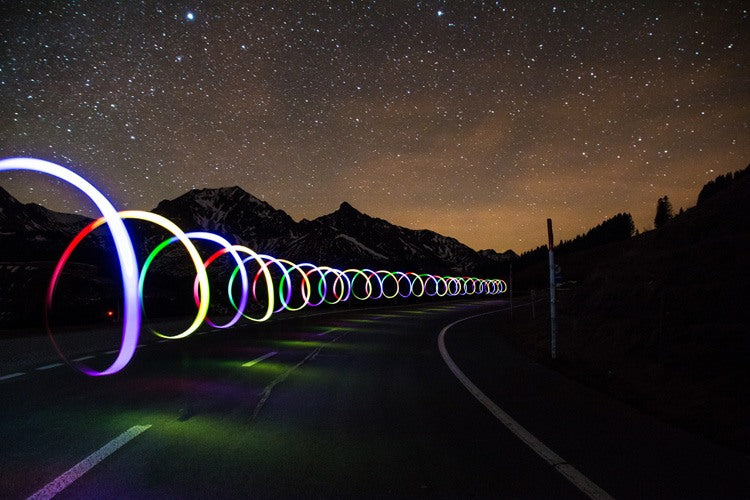
This technique shines especially bright in night photography, allowing photographers to snap breathtaking shots with effects that look out of this world. Long exposure can change a scene in ways our eyes just can't see on their own, making the invisible, visible.
Curious about how long exposure photography brings these stunning images to life? Keep reading to find out more.
What Exactly is Long Exposure Photography?
Long exposure, or what some call slow shutter photography, is all about using a slower shutter speed. This allows the camera to take in more of the scene over a longer period of time, capturing movements and effects that we normally can't see with just our eyes.
Using this method, photographers can make still objects look sharp and detailed, while anything moving in the scene gets a dreamy, blurred effect. Think of those pictures where the sea looks misty and magical around sharp rocks, or the sky is streaked with star trails – those are classic examples of long exposure shots.
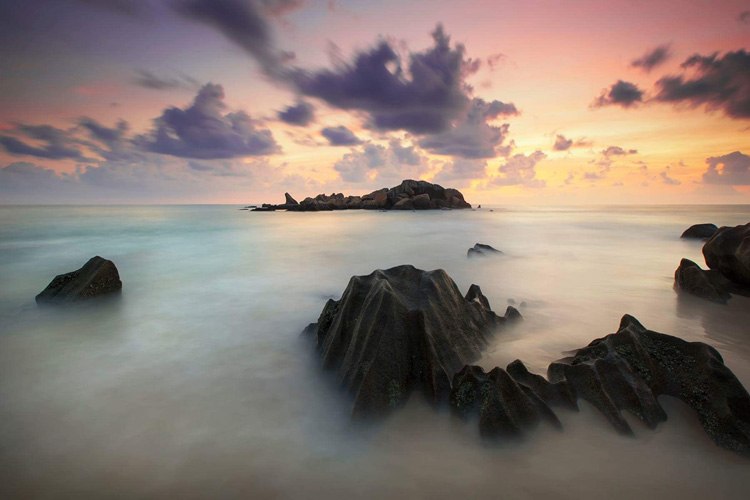
Purpose and Effect
The primary purpose of long exposure photography is to blur moving elements while keeping stationary objects sharp and in focus. This technique is often used to convey a sense of motion or to smooth out dynamic elements, such as water or clouds, creating a serene and almost surreal effect. It can also turn lights in motion, like car headlights or stars, into beautiful streaks across the image.
Common Subjects
Long exposure photography is versatile and can be applied to a wide range of subjects. Popular subjects include landscapes, cityscapes, and night scenes. Specific examples include:
- Waterfalls and rivers: The moving water becomes silky and smooth.
- Seas and oceans: Waves and water get a misty appearance, contrasting with static objects like rocks.
- Stars and the night sky: Capturing star trails or the Milky Way.
- Urban settings: Blurring the movement of vehicles to create light trails on roads.
How To Do It
Long exposure photography involves taking photos over a much longer period than your camera's default settings suggest. Instead of the quick snaps usually taken at speeds like 1/50th of a second or faster, you'll be letting the shutter stay open for half a second or more. This slower pace is what creates those magical, extended-moment effects.
Also read: How to Shoot the Perfect Long Exposure Time Lapse
Adjust Your Camera Settings
If Manual mode feels a bit daunting, don't worry! You can still explore long exposure photography using semi-manual or priority modes. Here's how you can adjust key settings:
- Aperture Priority: Aim to set your aperture between f/8 and f/16. The right setting depends on how much light is in your scene and how long you want your exposure to be.
- Shutter Speed: For long exposure shots, you might need the shutter to stay open for at least 10 seconds, sometimes even longer. Again, this will vary based on the lighting conditions of your scene.
- ISO: Keep your ISO as low as possible to avoid noise in your photos. ISO 100 is typically a good starting point for long exposure photography, ensuring clear and crisp images.
Also read: Understanding Camera Modes for High-speed Photography Triggering
What Equipment to Bring
To dive into the world of long exposure photography, you'll need a few key pieces of equipment. Here's a basic rundown to get you started:
-
Camera: Naturally, your camera is the most essential piece of equipment. You don't necessarily need a DSLR; many advanced point-and-shoot cameras come equipped with a Shutter Priority mode, making them suitable for long exposure shots.
-
Tripod: A sturdy tripod is crucial for long exposure photography. It ensures your camera stays perfectly still during the extended exposure times. Make sure to invest in a reliable tripod that can withstand slight movements or breezes without budging.
-
Miops Smart+: To avoid camera shake from pressing the shutter button, consider using a camera remote like the Miops Smart+. This device acts as a remote shutter release, enabling you to take pictures without having to touch the camera. The Miops Smart+ camera remote not only minimizes the risk of blurry images but also offers advanced features that can enhance your long exposure photography experience. The Miops Smart+ is versatile, supporting various photography techniques including time-lapse, HDR, remote shooting, and of course, long exposure.
- Filter Holder: If you're planning to use square filters — essential for some lenses that can't accommodate round filters — a filter holder will be necessary. It's advisable to set up your ND filters and filter holder before initiating the shutter, to ensure everything is in place for that perfect long exposure shot.
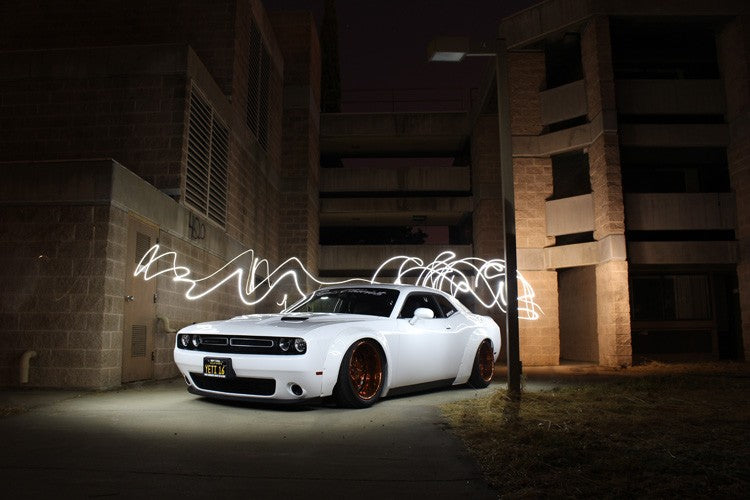
Getting the Perfect Long Exposure Photos
To nail those breathtaking long exposure shots, your gear is crucial, but so are other elements like your chosen subject, the timing of your shoot, and even the weather. Here are some straightforward tips to help you capture stunning long exposure images:
-
Pick Your Subject Wisely: Long exposure works wonders with scenes where you can contrast moving elements with static ones. City lights, flowing landscapes, and the dynamic sea are perfect subjects to start with.
-
Watch the Weather: Believe it or not, a bit of wind and some clouds can be your best friends for long exposure photography. They add movement and drama to the sky. Always check the weather forecast before planning your shoot to ensure conditions are on your side.
-
Scout Your Location Early: Take a day to visit your chosen spot before the actual shoot. This is crucial for finding the ideal place to set up your tripod, especially in dim light situations. Use this time to imagine your shots and figure out the best composition.
-
Timing is Everything: The soft light of early morning or late evening is gold for long exposure photography, reducing the need for ND filters and letting you play more with natural conditions for creative effects.
-
Keep It Clean: A long exposure means your camera's shutter is open for a while, so any dust on your lens or filter could spoil your shot. A quick clean before you start and between shots can make a huge difference, saving you the headache of fixing things later in editing.
Remember, long exposure photography is as much about patience and preparation as it is about technique. With these tips in hand, you're well on your way to capturing those dreamy, motion-blurred images that long exposure is famous for.
Inspirational Examples of Long Exposure Photography
Long exposure photography can transform ordinary scenes into breathtaking images. To inspire you and spark your creativity, let's explore a few examples of how this technique can be applied across different subjects:
-
Cityscapes at Night: Imagine a bustling city at night, where the lights of moving cars blur into glowing rivers of color against the sharp, still outlines of buildings. These long exposure shots capture the vibrant energy of city life in a way that feels almost magical.
-
Waterfalls and Rivers: By using a slow shutter speed, water in motion becomes a silky, smooth cascade. The contrast between the soft water and the sharp, stationary rocks or surrounding landscape creates a serene and dreamy effect that's utterly captivating.
-
Star Trails: When photographing the night sky over a long period, stars appear as light trails circling the sky, painting patterns of time and motion. This technique showcases the beauty of the cosmos in a way that feels both vast and intimate.
-
Seascapes: Long exposure can make the ocean look like a misty, ethereal plane, with waves appearing as soft fog around rocks or piers. The calmness of the water contrasts beautifully with the solidity of the landscape, offering a peaceful and surreal perspective.
-
Light Painting: This fun and creative technique involves moving a light source in front of the camera during a long exposure. The result is a photograph where light trails form dynamic shapes and patterns, limited only by your imagination.
These examples are just the beginning. Long exposure photography opens up endless possibilities for capturing the world in unique and surprising ways. Whether you're drawn to the calmness of a mist-covered lake at dawn or the frenetic energy of a city at rush hour, long exposure can add a layer of depth and intrigue to your images that transcends the ordinary. Let these examples inspire you to experiment with time and motion in your photography, creating your own stunning, long-exposure masterpieces.
More from MIOPS
Long exposure photography is one of the techniques that will allow you to create those ethereal shots that most people find heavenly. The production may be tedious, but once the final output comes out, you will see that it is worth it.
For more information, tricks and tips on how to improve your photography skills and creativity, feel free to read our blog. You can also check our shop and discover other amazing products that will help you take your photography to the next level.
Related Article: What is a High-Speed Camera Trigger and How Does it Work?








